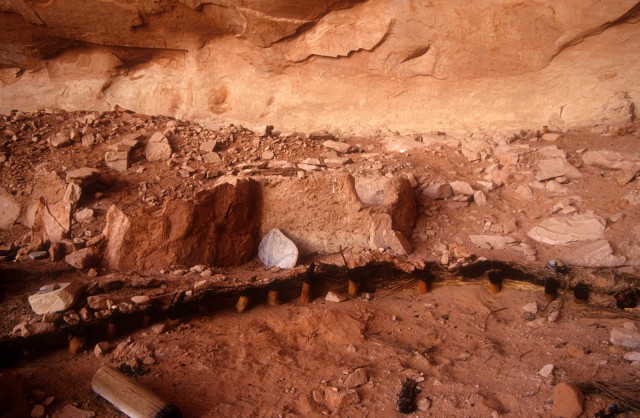- Home
- >
- Preservation Archaeology Blog
- >
- Going Back to the Past: The Basketmaker Roots of t...

Scott Michlin welcomed me back to his morning show morning radio show on KSJE, the San Juan College radio station in Farmington, New Mexico, this past Monday. For December, I spoke about the Basketmaker era in the northern Southwest. I framed it chronologically, from roughly 2000 B.C. to A.D. 750, and discussed the great length of this developmental period. You can listen to our conversation here.
We begin the Basketmaker II period around 2000 B.C. because that’s when corn first appeared in the northern Southwest. Interestingly, even with this very early advent of corn agriculture, people didn’t begin living in permanent settlements (sedentism) until roughly 2,500 years later, at or around A.D. 500. Thus, during this long Basketmaker II interval, hunter-gatherers began to make use of corn, but did not truly embrace it.
I talked about this long period of transition, then, as a genuine mystery in our current understanding of the Basketmaker era. What finally pushed people to embrace a full commitment to corn agriculture, along with construction of large, deep pithouses, use of pottery, cultivation of beans, and a much more sedentary lifestyle? The answer is not clear. Certainly, population density—the number of people living on a landscape—played a role. Another possibility suggests that groups practicing a more sedentary approach migrated into multiple areas on the Colorado Plateau between A.D. 100 and 500.

Another fascinating point relates to the emergence of bow-and-arrow technology during this period (as discussed in one of my previous posts). The bow first appears as early A.D. 100 but was widespread by A.D. 500, the date by which the changes listed above took hold. The appearance of the bow might signal the migration of outside groups into the area, although the evidence is not clear.
For the radio audience, I highlighted the importance of understanding the long Basketmaker interval as the precursor to all later Puebloan developments. Without the long Basketmaker preamble, particularly the Basketmaker III period (A.D. 500-750), during which groups made the firm commitment to the Puebloan lifestyle, none of the later developments that garner much of the attention would have been possible. The roots of Chaco Canyon, Mesa Verde, Aztec, Salmon, and all the other spectacular communities lie in the Basketmaker interval. To do justice to it, additional study is necessary.
Explore the News
-
Join Today
Keep up with the latest discoveries in southwestern archaeology. Join today, and receive Archaeology Southwest Magazine, among other member benefits.